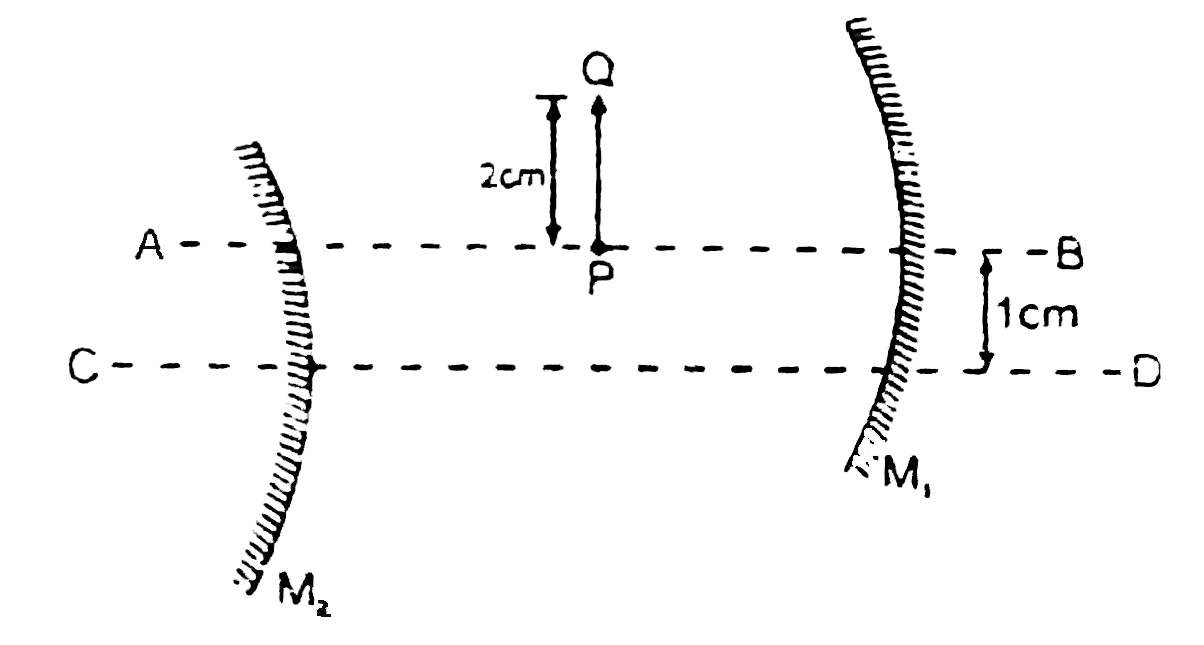The focal length of a thin biconvex lens is . When an object is moved from a distance of in front of it to , the magni-fication of its image changes from . The ratio is.Solution in Gujrati
The correct Answer is:6
Topper's Solved these Questions
Similar Questions
An optical component and an object S placed along its optic axis are given in Column I . The distance between the object and the component can be varied. The properties of images are given in Column II . Match all the properties of images from Column II with appropriate components given in Column I.
_E01_239_Q01.png)
View SolutionIn the Bohr's model of hy drogen atom, the electron moves around the nucleus in a circular orbit of radius 5×10−11m. Its time period is 1.5×10−16s. The current associated with the electron motion is:-
View SolutionAssertion : The difference in the value of acceleration due to gravity at pole and equator is proportional to square of angular velocity of earth.
Reason : the value of acceleration due to gravity is minimum at the equator and maximum at the pole.
View SolutionWhen an object is placed at a distance of 25 cm from a mirror, the magnification is m1. The object is moved 15cm farther away with respect to the earlier position, and the magnification becomes m2. If m1/m2=4 , then calculate the focal length of the mirror.
View SolutionThe focal length of a thin biconvex lens is 20cm. When an object is moved from a distance of 25cm in front of it to 50cm, the magnification of its image changes from m25 to m50. The ration m25/m50 is
View SolutionThe focal length of a thin biconvex lens is 20 cm . When an object is moved from a distance of 25 cm in front of it to 50 cm , the magni-fication of its image changes from m_(25) to m_(50) . The ratio (m_(25))/(m_(50)) is.
View SolutionThe focal length of thin biconvex lens is 20 cm . When an object is moved from a distance of 25 cm in front of it to 50 cm , the magni- fication of its image changes from m_(25) to m_(50) . The ratio (m_(25))/(M_(50)) is
View SolutionIn the figure shown M1 and M2 are two spherical mirrors of focal length 20cm each. AB and CD are their principal axes respectively which are separated by 1cm.PQ is an object of height 2cm and kept at distance 20cm from M1. The separation between the mirrors is 50cm Consider two successive reflections first on M1 then on M2. Find the size of the 2nd image. Also find distances of and points P'' and Q'' of that image from the line AB.
 .
.
View SolutionIf an object is placed at 50 cm from a convex lens of focal length 25 cm , what will be the image distance ?
View SolutionAn object is kept in front of a lens of focal length-20 cm . Describe the nature of the image when the object distance is 25 cm.
View SolutionAn object is placed at 50 cm in front of a concave mirror of focal length 25 cm. What is the nature of the image produced by the mirror ?
View Solutionएक पतले उभयोत्तल लेंस की फोकस दूरी 20 सेमी है | जब लेंस के सामने बिम्ब को 25 सेमी से 50 सेमी दूर ले जाया जाता है तो इसके प्रतिबिम्ब का आवर्धन m25 से n50 हो जाता है | m25m50 अनुपात का मान क्या होगा ?
View SolutionThe focal length of a thin biconvex lens is 20 cm. When an object is moved from a distance 25 cm in front of it 50 cm, the magnitude of its image changes from m25 to m50. The ratio m25m50 is
View SolutionA lens with a focal length of 25 cm produces real image of an object at a distance of 50 cm from the lens. At what distance the object placed from the lens?
View SolutionThe focal length of a thin biconvex lens is 20cm .When an object in moved from a distance of 25cm infront of it to 50cm ,the magnification of the image changes from m_(1) to m_(2) .Find the ratio (m_(1))/(m_(2))
View Solution
